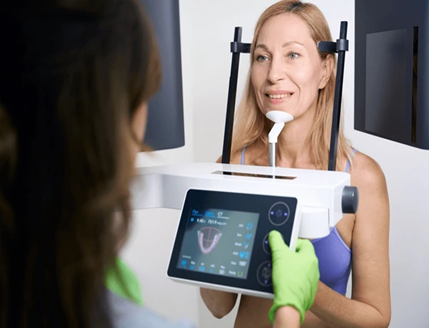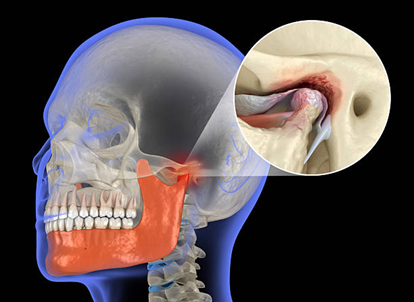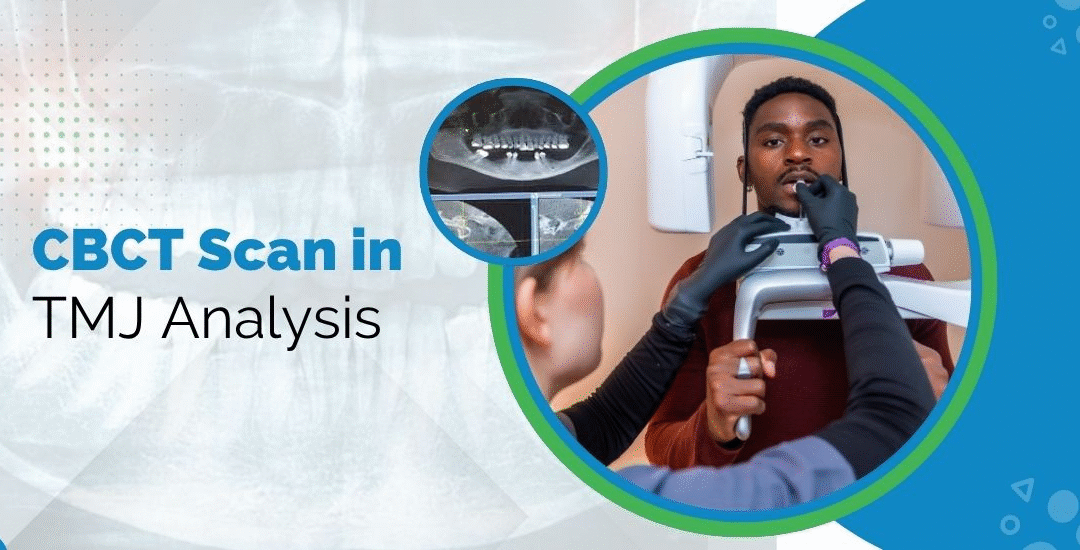The temporomandibular joint (TMJ) plays a crucial role in jaw movement, enabling essential functions such as speaking, chewing, and swallowing. Disorders affecting the TMJ can lead to pain, discomfort, and restricted jaw movement, disrupting daily life. These issues may stem from various causes, including misalignment, arthritis, or jaw injury. Diagnosing TMJ disorders can be complex, as their symptoms often overlap with other dental or medical conditions. This is where advanced imaging techniques, like CBCT scans for TMJ analysis, prove invaluable.
Dr. Manjul Jain, a renowned dentist in Andheri, Mumbai, notes, “A CBCT scan in TMJ analysis provides a comprehensive 3D view that helps in identifying the underlying causes of TMJ disorders, ensuring accurate and effective treatment.”
At Metro Dental Clinic in Andheri, Mumbai, Dr. Manjul Jain utilizes cutting-edge tools, including the CBCT scan for TMJ analysis to ensure accurate diagnosis and treatment of TMJ disorders. With his expertise spanning 29 years, Dr. Jain is an accomplished specialist in Orthodontics and Implantology. His commitment to accurate, personalized treatment has made a significant difference to dental experience of thousands of patients.
Why CBCT is Important in TMJ Analysis

A CBCT scan for TMJ analysis offers a level of precision that conventional 2D X-rays cannot match. Traditional X-rays can capture only a flat, limited view of the TMJ, whereas CBCT provides a detailed three-dimensional image of the entire joint.

This allows the dentist to assess not only the bone structures but also the soft tissues and the overall alignment of the TMJ. With 3D CBCT scan technology, the doctor can gain a better understanding of the joint’s condition, aiding in early detection and treatment planning.
Advantages of CBCT Over Traditional Imaging
Unlike conventional imaging techniques, CBCT scans offer several benefits in TMJ analysis:
- 3D Imaging:
CBCT gives high-definition 3D images, presenting a complete image of the TMJ as opposed to the 2D images from regular X-rays.
- Higher Accuracy:
CBCT offers more accurate and precise information, facilitating more accurate diagnosis and treatment planning.
- Reduced Radiation Exposure:
CBCT employs less radiation than conventional CT scans, thus being safer.
- Comprehensive View:
CBCT captures all sides of the TMJ, enabling experts to examine the condition of the joint extensively.
- Faster Diagnosis:
The 3D image gives swift, accurate results, accelerating the diagnosis.
- Advanced Soft Tissue Analysis:
CBCT is capable of revealing both soft and hard tissues, providing a better insight into TMJ problems.
- Non-invasive:
CBCT is a non-invasive imaging method, with thorough results achieved without exploratory procedures.
How CBCT Helps in Diagnosis and Treatment Planning

Precise Diagnosis:
CBCT offers 3D pictures which enable an expert to diagnose properly the structural problems, i.e., joint misalignment, arthritis, or bone loss.
- Better Visualization:
It helps experts to evaluate the TMJ from various sides, thereby having a better knowledge of the joint’s status.
- Personalized Treatment Plans:
With precise imaging, experts are able to design individualized treatment plans based on the patient’s unique TMJ problems.
- Surgical Planning:
Planning surgeries is facilitated by CBCT to ensure more precise and less invasive surgeries.
- Monitoring Progress:
Changes within the TMJ over time can be tracked through the use of CBCT scans, thus assisting in monitoring the success of treatments.
- Early Detection:
The 3D scan enables the early identification of potential TMJ issues, allowing for treatment before they become severe.
- Enhanced Communication:
Detailed CBCT images make it easier for patients to understand their diagnosis, helping them make informed decisions about their treatment options.
Safety and Accuracy of CBCT in TMJ Evaluation
CBCT (Cone Beam Computed Tomography) is widely regarded as a safe and accurate imaging tool for evaluating TMJ disorders. One of the primary benefits of CBCT is its relatively low radiation exposure compared to traditional CT scans, making it a safer option for patients. Despite its reduced radiation, CBCT provides highly accurate, high-resolution 3D images that enable a detailed assessment of the temporomandibular joint and its surrounding structures.
This precision enables a specialist to identify even subtle TMJ issues, such as joint misalignment or early signs of degeneration, which may not be visible with traditional 2D imaging methods. As a result, CBCT enhances the ability to accurately diagnose TMJ disorders, leading to more effective and targeted treatment plans. Furthermore, the non-invasive nature of CBCT contributes to a comfortable and safe evaluation process for patients.
When Should You Consider a CBCT Scan for TMJ?

Below are the instances when you need to think about a CBCT scan for TMJ:
* Ongoing Jaw Pain:
When you have persistent jaw pain that fails to get better with standard remedies.
* Clicking/Popping Sounds:
When your jaw produces clicking or popping sounds while moving.
* Restricted Jaw Movement:
If you are having trouble opening or closing your mouth normally.
* Prior Injury or Trauma:
Following a jaw trauma or injury, it helps determine the severity of the damage to the TMJ.
* Persistent Symptoms:
When standard X-rays or other diagnostic procedures don’t give a satisfactory amount of information for a definitive diagnosis.
* Arthritis Signs:
In case of symptoms indicating arthritis or other joint diseases of the TMJ.
* Pre-Surgical Planning:
CBCT scan for dental implants or prior to surgery to analyze the TMJ thoroughly.
Conclusion
The use of CBCT scans in TMJ diagnosis has transformed the dental professional approach to diagnosing and treating temporomandibular joint disorders. With the latest technology, 3D images of the highest detail make diagnosis and planning for treatment more effective and patient care better overall.
Dr. Manjul Jain, with his extensive experience and utilization of advanced technology, provides his patients with the optimal care for temporomandibular joint disorders at Metro Dental Speciality Clinic.
FAQs
How is CBCT different from traditional X-rays?
How is CBCT different from traditional X-rays?
Is CBCT safe for TMJ evaluation?
What are the risks associated with CBCT scans?
Do all TMJ disorders require a CBCT scan?
Reference links:
https://pmc.ncbi.nlm.nih.gov/articles/PMC4277441/
https://bmcoralhealth.biomedcentral.com/articles/10.1186/s12903-022-02701-5
Disclaimer: The information shared in this content is for educational purposes and not for promotional use.

